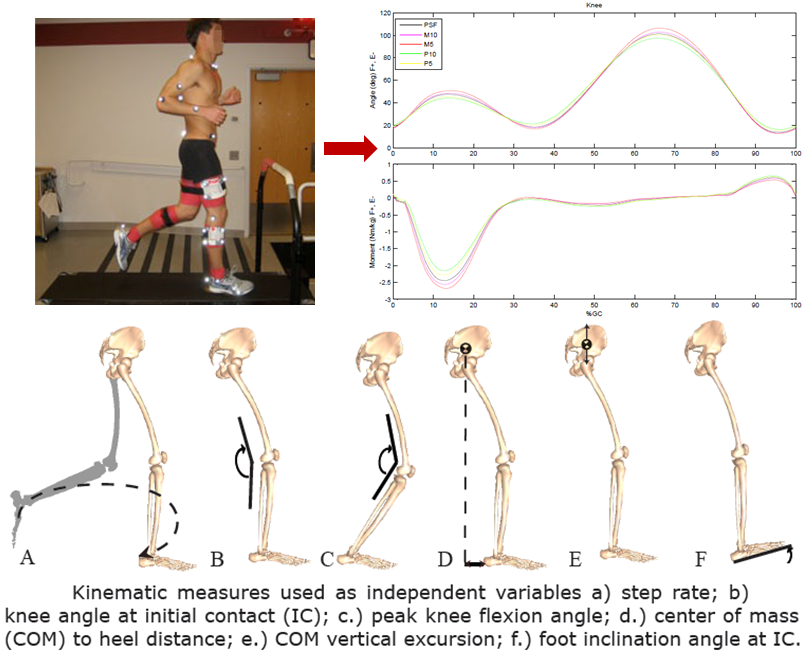Step Rate Modification during Running

|
Quick Facts:
Project Dates:
May 2009 - Present
Funding Agency:
NIH, Shapiro Fellowship, Hilldale Fellowship
Current NMBL Personnel:
Christa Wille, Elizabeth Chumanov, Rachel Lenhart, Bryan Heiderscheit
Publications from this work:
Heiderscheit B, Chumanov E, Michalski M, Wille C, Ryan M. Effects of Step Rate Manipulation on Joint Mechanics during Running. 2011. Med Sci Sports Exerc. 43(2):296-302.
[pdf]
Conference Proceedings:
APTA 2011 - New Orleans, LA
ASB 2012 - Gainesville, FL
|
Abstract
It is expected that approximately 56% of recreational runners will sustain a running-related injury each year, with 42% of all injuries occurring at the knee. Although many risk factors have been identified, excessive knee joint loading has been identified as one of the most common when predicting the occurrence of injury. In attempts to reduce the amount of energy absorbed in the lower extremity joints, our lab is analyzing the effects of increasing a runner's step rate. We have previously shown that when step rate is increased from preferred, a substantial reduction in energy absorption occurs at the knee and hip. Therefore, this demonstrates that subtle changes in step rate can reduce the energy absorption required of the lower extremity joints, which may prove beneficial in the prevention and treatment of running injuries. To further understand the benefits of an increased step rate current studies involve:
- Analysis of changes in muscular activity with a change in step rate
- Protocol for changing a runner's step rate
- Compliance to step rate changes
- Kinematic measures used to predict kinetics while running
- Randomized control trial to determine the effectiveness of using an increased step rate as a treatment for runners with anterior knee pain
(Back to Prior Research)
|
|

